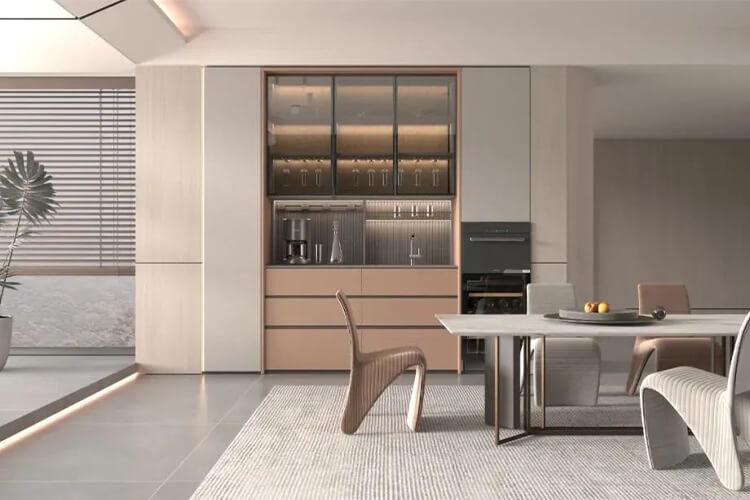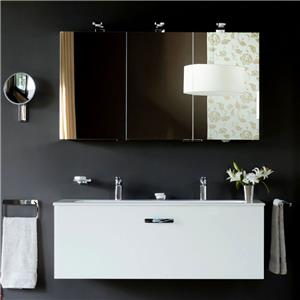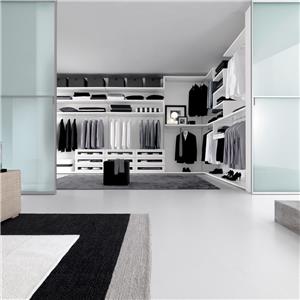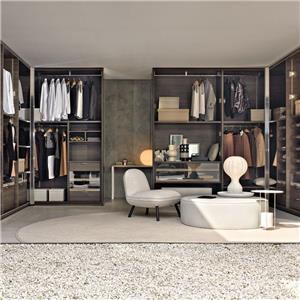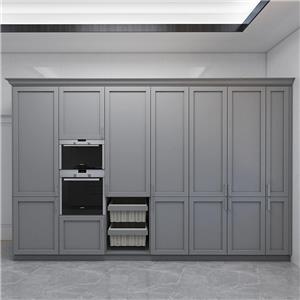5 Custom Dinning Sideboard Styling Ideas
5 Custom Dinning Sideboard Styling Ideas
A well-designed dining sideboard not only serves as a storage powerhouse and a stylish addition to your home but also enhances the practicality and efficiency of your daily routines! Wondering how to optimize your dining sideboard for maximum practicality and utility? Keep reading to find out more.
1. Embedded Dining Sideboard
Dining sideboard as an embedded wall unit minimizes its floor footprint. This design seamlessly integrates the sideboard into the overall decor, and gives a spacious visual appeal. The middle open section can be used as a temporary storage area for easy access and tidiness.Remember that it requires precise measurement and planning during customization.
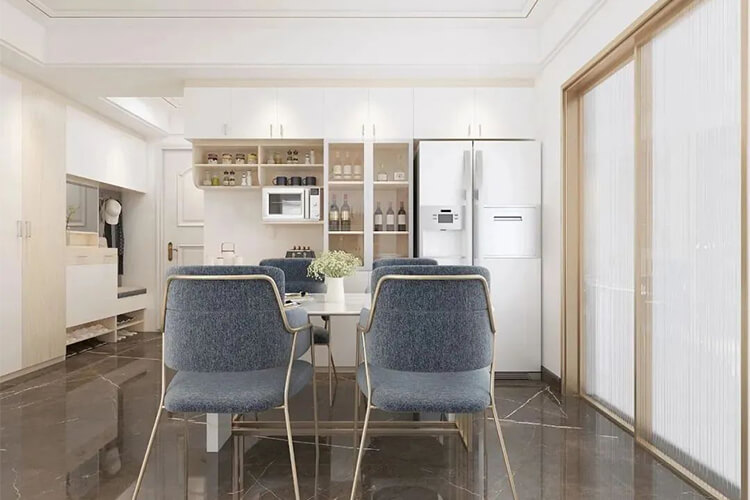
In cases where adjacent walls are non-load-bearing, embedding the dining sideboard flush with the wall surface not only saves space but also enhances the overall aesthetics.

2. Divider Dining Sideboard
The dining sideboard doesn't just excel at dining table storage. It can also act as a room divider, create spatial divisions and enhance privacy while preserving the openness of the room.
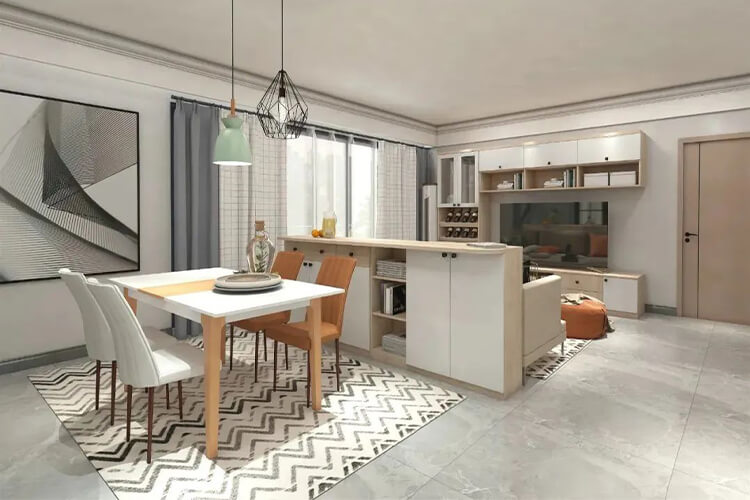
3. Modular Dining Sideboard
Integrating the entryway and the dining sideboard as a unified design maximizes storage functionality. One side serves as an entryway cabinet, while the other functions as a dining sideboard to optimize storage potential.
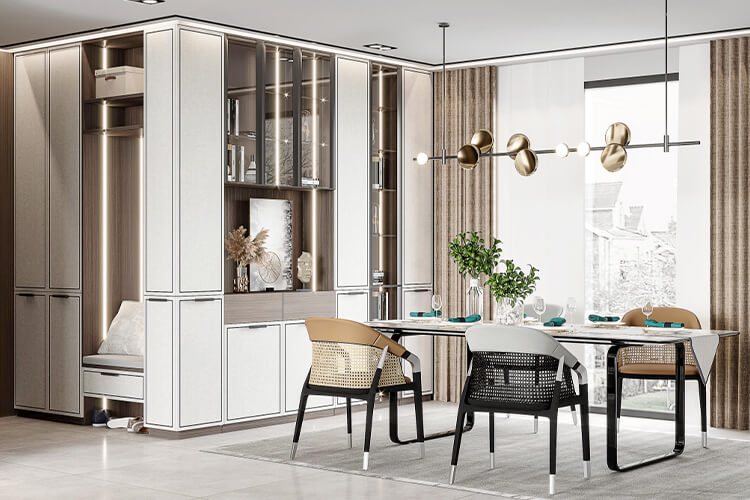
Combine the dining sideboard with a wine cabinet and customize it with wine racks and transparent glass doors to improve its decorative appeal. Embedded lighting lights up the cabinet's interior while creating an sense of sophistication that permeates the space through the glass doors.
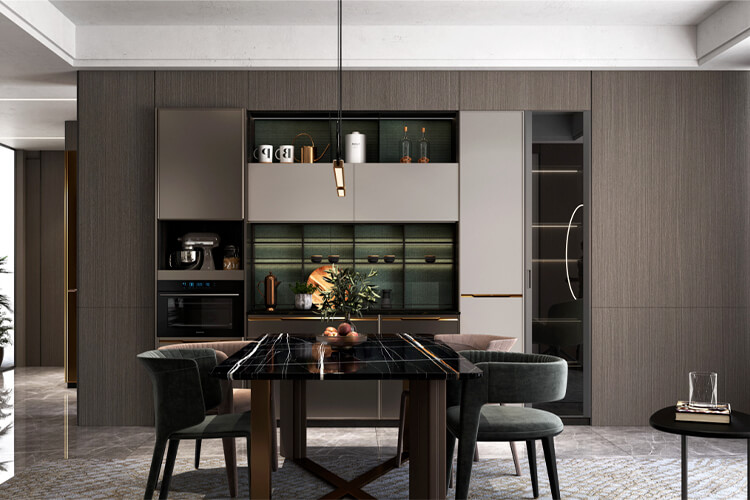
Wine lovers can take a custom wine cabinet into consideration. It not only stores but also decorates, utilizing elements like metal and glass to create an upscale dining ambiance. Embedded LED lighting not only increases interior brightness but also emits a sense of refinement through the glass doors, elevating the overall atmosphere.
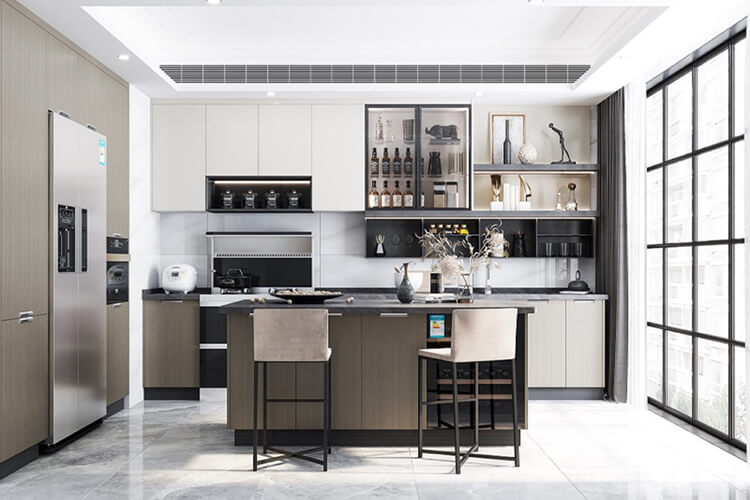
An open-plan kitchen and dining area is typically designed for a smooth and efficient work flow. Use separate dining tables and chairs, an island counter, or a bar, paired with soft warm lighting, to create a cozy dining atmosphere.
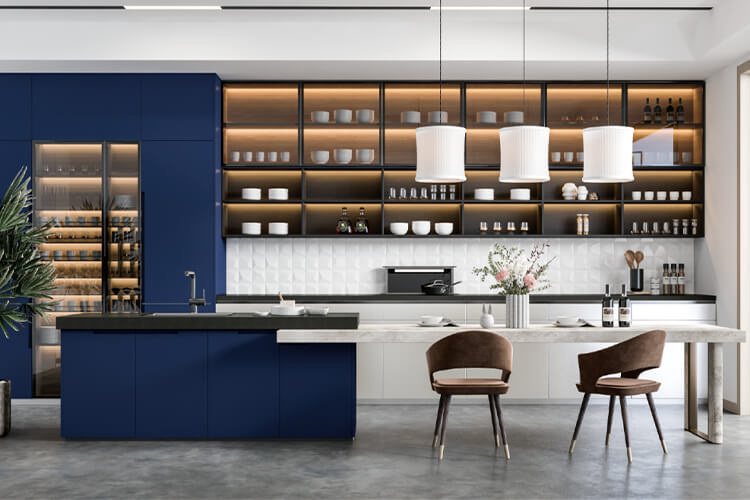
The combination of an kitchen island with a dining sideboard optimizes space utilization and offers additional storage and organization for meal preparation.
4. Booth-Style Dining Sideboard
Offering seating and substantial storage space, booth-style dining sideboards are particularly friendly for homes with limited space. When combined into a unified design, booth seating and the dining sideboard become even more practical.
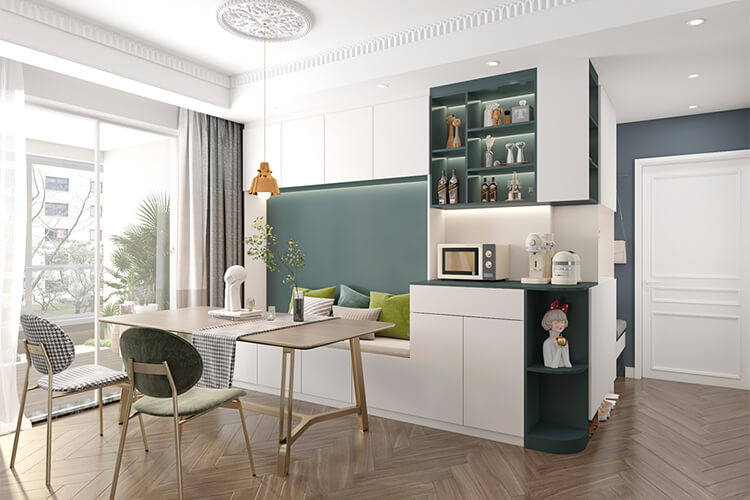
In homes with limited dining space, consider creating a wall-mounted booth seating dining area. This design not only maximizes space utilization but also incorporates storage cabinets beneath the booth for storing everyday items.
5. Freestanding Dining Sideboard
A independent dining room is typically suitable for larger homes, where a dedicated area must be planned for placing dining tables, chairs, and even a dining sideboard. Customizing a ceiling-height dining sideboard in a consistent style adjacent to this area not only provides ample storage but also elevates the overall aesthetics of the dining room.
